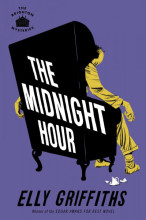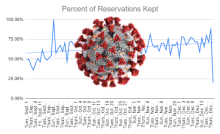Evyn Kropf
Library Blogs
Showing 1 - 9 of 9 items
Results
for Date: January 2022

Newly featured on the Islamic Manuscript Studies research guide --- a selection of resources for the study of watermarks, especially useful for Islamic manuscript cultural contexts. A selection of these resources was first published 5 September 2012 on a retired blog platform and subsequently enhanced and updated.
•
In the Spring of 2021, a researcher I regularly work with informed me that he had included the citation to his dataset in the References section of the paper that he had just submitted to AGU JGR Planets, https://agupubs.onlinelibrary.wiley.com/doi/10.1029/2021JE006875. I thought it was an excellent opportunity to follow one of our datasets through the process from a mention in the References section all the way through to the DataCite Data Metrics badge, https://support.datacite.org/docs/displaying-usage-and-citations-in-your-repository, in the Deep Blue Data repository indicating this dataset has been cited.
•
In early 2021, I was trying to verify whether the DataCite Data Metrics badge, https://support.datacite.org/docs/displaying-usage-and-citations-in-your-repository a tool for displaying usage and citation information, was working or not. However, I had no easy way of knowing whether any of our researchers had actually cited any of the data sets we host in Deep Blue Data in their published articles, let alone whether other researchers had. So, I decided to begin the process of adding citations to our datasets via the DataCite API, based on information we have in our “Citations to related material” field. I was using the instructions on https://support.datacite.org/docs/contributing-data-citations#.
The following is my process and the results of that process.
The following is my process and the results of that process.

Second in a series of guest posts from Shaoyi Qian, summer 2021 Baker Fellow at the U-M Library's conservation lab, describing her work on several pop-up and moveable books.

In this mystery set in Brighton, England, in 1965, private detective Emma Holmes investigates the murder of a theatrical impresario. His wife, a former music hall star, is accused of killing him. To prove her innocence, she hires Emma and her partner in the firm, Samantha "Sam" Collins, to solve the crime. Emma is also the wife of the police superintendent, Edgar Stephens, and they decide to work together, along with a young police officer, Meg Connolly. Griffiths writes vividly about the world of theater, film, and television in England in the 1960s, in this entertaining mystery.

The staff here at the CVGA were saddened recently to hear of the death of legendary Nintendo engineer Masayuki Uemura at the age of 78. For those who don't know, Uemura was the head engineer behind Nintendo’s first home consoles, including the Nintendo Entertainment System (NES) and the Super Nintendo (SNES). Gaming couldn’t be what it is today without Uemura and his team; We have a lot to thank him for. Why not come to the archive and play some NES/SNES games in his memory?

The interruption to library services caused by COVID-19 meant we needed to quickly develop new data collection strategies to give us information to manage our modified services for the 2020-2021 academic year. It also gave us an opportunity to conduct a deep reflection and assessment of how our regular collection had been going, and to be ready to make changes as we reinstituted more regular services. In two posts, we describe the evolution of our data collection efforts.

This sequel to The Three Musketeers continues the adventures of d'Artagnan, Athos, Porthos, and Aramis. The new ruler of France is the cunning and manipulative Cardinal Mazarin. During a rebellion against his rule, the musketeers find themselves on opposite sides of the conflict. They travel to England to save Charles I from execution, and fight against Mordaunt, the evil son of Milady, who is determined to avenge his mother's death.

The interruption to library services caused by COVID-19 meant we needed to quickly develop new data collection strategies to give us information to manage our modified services for the 2020-2021 academic year. It also gave us an opportunity to conduct a deep reflection and assessment of how our regular collection had been going, and to be ready to make changes as we reinstituted more regular services. In two posts, we describe the evolution of our data collection efforts.